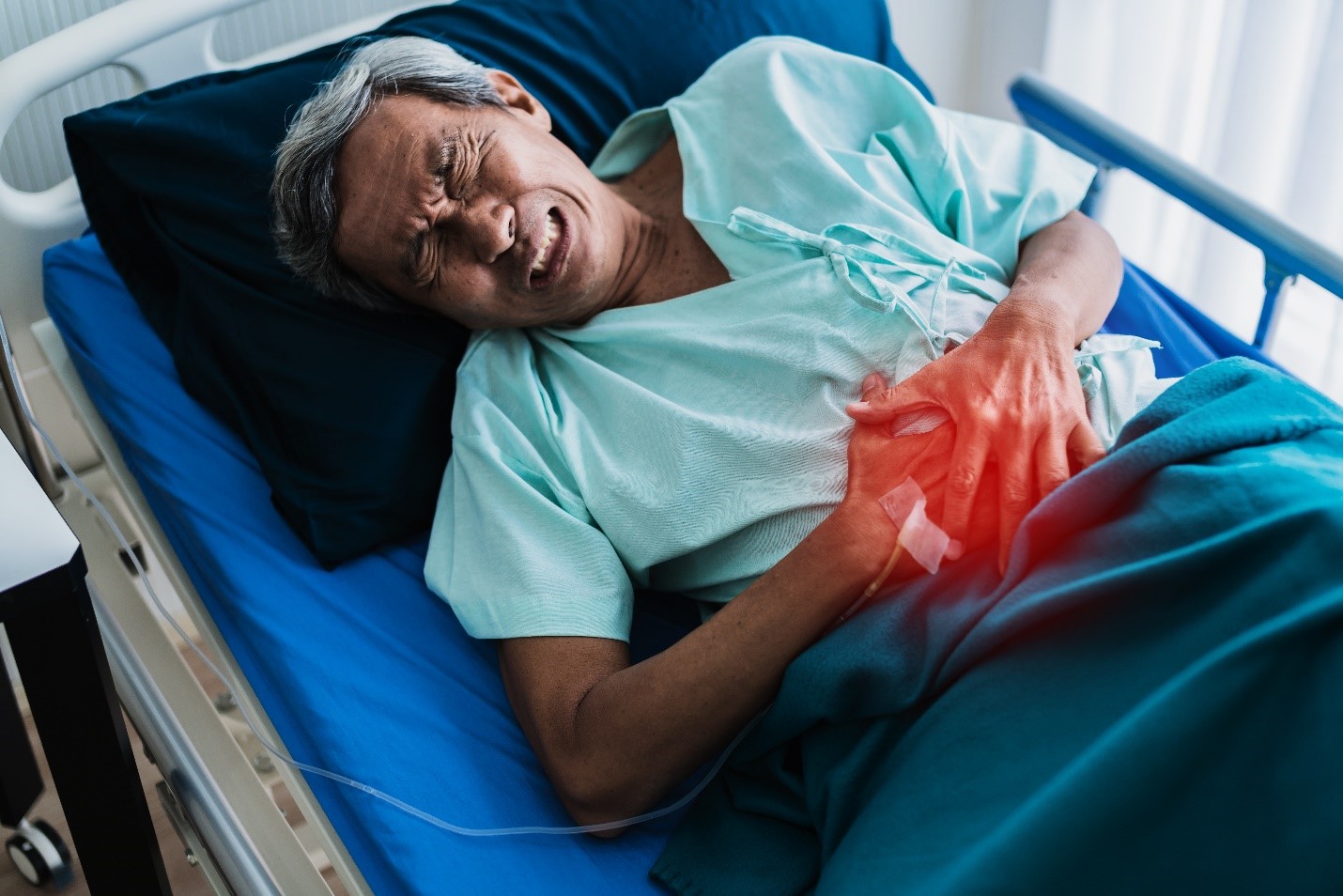The gastrointestinal system is responsible for converting food into energy to suit the body’s nutritional and functional demands. This mechanism is disrupted by anything that impairs its function, which leads to sickness. The esophagus (food tube), stomach (which mixes food and forms chyme), small intestine (small diameter tube 20 feet long, consisting of the duodenum, jejunum, and ileum), and large intestine (large diameter tube which includes caecum, colon, rectum, and anal canal) make up the gastrointestinal tract.
In the stomach, food is ground into minute particles. Mucus is secreted by the stomach to protect the gastrointestinal tract’s lining. It also produces hydrochloric acid and many enzymes and prepares food for digestion by converting it to semifluid chyme. Pancreatic juice is secreted by the pancreas into the duodenum to aid in the digestion of meals in the small intestine. The liver, the largest organ in the digestive system, receives food products brought by blood vessels from the walls of the digestive tube. Dietary factors linked to gastrointestinal (G.I) tract disorders are:
- Acidity
- Inadequate fiber
- Fat
- Substances such as gluten in wheat
Another substance, alcohol, also has a negative impact on the G.I. tract’s health. It is not, however, a food or a dietary requirement.
General Aspects of Digestion
Food Acidity and Gastric Acidity
Foods have a pH of 5 to 7, while acid (hydrochloric) released in gastric fluids has a pH of less than 2. Citrus fruits and other acid-tasting meals have a pH of 3.5 or higher. As a result, no food has enough acidity to alter the acidity of the stomach contents. This is critical information that should be communicated to acidity patients so that they do not avoid vitamin C-rich foods and develop vitamin C insufficiency.
Gastric acid is neutralized by protein-rich diets. As a result, milk is the preferred food for treating acidity. It has a half-hour to two-hour neutralizing effect. Acid production and motility are both reduced by fat. As a result, peptic ulcers were treated by adding cream to milk. However, because cream contains saturated fats, it should be used in moderation to reduce the risk of atherosclerosis.
Gastric acid production is increased by stimulants. As a result, those who suffer from acidity should avoid them. Tea, coffee, alcohol, cigarettes, meat extracts in soups and gravies, and spices such as chili powder, black pepper, mustard seeds, and nutmeg are all stimulants to avoid.
Constipation
Atonic constipation affects people who do little or no exercise, especially the elderly. They eat soft, low-fiber foods and drink only a small amount of water to avoid urinating, especially at night. They become reliant on laxatives but yet experience no relief because the underlying causes are not addressed.
- Treatment: Constipation can be relieved by making the following lifestyle and dietary changes:
- Increase your fluid intake to 1200–1500 ml. i.e., in addition to other beverages and liquid foods, 5 to 6 glasses of water (soups, buttermilk, etc.)
- Consume 200 to 250g of veggies and fruits per day.
- Exercise on a regular basis, such as walking for 34 to 1 hour every day.
- Engage in physical activity.
- Diet: Their diet must progressively be changed to a high-fiber diet, as follows:
- Replace white bread and polished rice with whole wheat chapati as the main element of your meal.
- Incorporate cooked germinated pulses into your diet.
- Eat two or more servings of cooked vegetables like cluster and other beans, as well as gourds.
- Consume raw vegetables such as cabbage, carrots, cucumbers, tomatoes, radish, and other similar items.
- Eat two or more servings of fruits including amla, banana, papaya, guava, melons, jackfruit, berries, apples, and so on.
- Increase your fluid intake by drinking beverages like buttermilk or lemon squash.
- Drink 5 to 6 glasses of water per day to keep food moving through the digestive tract and waste products moving smoothly.
Dietary adjustments must be made gradually to minimize bloating or cramping as a result of the alterations.
Diarrhea
Diarrhea is one of the most prevalent gastrointestinal problems. It remains the second leading cause of death in children, claiming the lives of more than 1.5 million children in India alone.
The presence of diarrhea implies that food and water have been contaminated with viruses and bacteria from human feces. The feces in diarrhea are watery or semisolid, and big amounts of them are passed regularly. Vomiting, cramping, and abdominal pain may also present. Food moves through the gastrointestinal tract at such a fast rate that digestion and absorption are compromised. Water and electrolytes are not reabsorbed because feces pass through the colon so quickly.
Fluids, electrolytes, minerals, vitamins, proteins, lipids, and carbohydrates are lost as a result of frequent and/or extended attacks, and as a result, bodyweight is lost. Dehydration occurs as a result of this.
Therapy: The first stage in treatment is to determine the source of the problem and eliminate it. Fluids and electrolytes may be given intravenously to allow the gastrointestinal tract to rest if diarrhea is severe and dehydration has set in (eyes sunken, skin loose and inelastic, passing reduced volumes of dark urine). This is followed by the administration of fluids, followed by a progressive transition to oral rehydration therapy, and finally, a very low residue diet.
If an oral rehydration mixture is not available, make your own with 40g of sugar and 3.5 g of salt per liter, plus potassium-rich foods such coconut water, lemon juice, banana, mashed papaya, mashed plantains, and so on.
Low Residue Diet
In situations of severe diarrhea, oral rehydration therapy is followed with a very low residue diet. By lowering the amount of dietary fiber and reducing food residue, a low residue diet of less than 10g of fiber per day lowers the typical work of the intestines. Undigested food, intestinal fluids, germs, and cells lost from the intestinal lining make up the bulk of food waste in the colon. Buttermilk, broth, vegetable and fruit juices, coconut water, and other liquids are among the permitted foods. Cooked eggs, pureed mild-flavored vegetables, apple sauce, fruit pulps, refined bread, soft cooked rice, custards, and other soft foods can be progressively introduced to boost nutrient content as the patient’s condition improves and appetite eventually returns.
The patient must progressively advance from a liquid to a soft to a normal diet. To avoid diarrhea recurrence, food contamination must be avoided.
Food Tolerance
Food tolerance is a very individual response to a variety of foods. When certain foods are consumed, some people experience heartburn, flatulence, and abdominal distention. Tolerance towards these foods is a highly personal reaction that must be treated as such. Dry beans have been mentioned as sources of pain. Strong-flavored vegetables with sulfur compounds, such as cabbage, cauliflower, leeks, onions, radishes, and turnips, are named among the veggies. Cucumbers and watermelon are off-limits to some people. Before establishing a diet plan to treat them, it’s critical to document the patients’ diet history, including their reported food tolerance.
Nervous, tense, overly worried, insecure, abandoned, and/or anxious people are more likely to have gastrointestinal problems. Their emotions have a negative impact on the digestive tract’s function. Other causes include:
- Irregular eating hours.
- Fast meal gulping and hence poor mastication.
- Lack of rest.
- Absence of a sensible routine.
Fortunately, each food category has a large variety of foods to choose from, making it easy to construct a nutritionally appropriate diet utilizing foods that the patient tolerates well.
As a result of the abovementioned, meal plans for people with gastrointestinal problems must be tailored to their specific needs. In addition to a diet plan, the individuals require assistance in modifying their thinking in order to accept their responsibilities sensibly and arranging their day’s work schedule and food consumption. It is necessary to reduce stress. They must be taught to have regular mealtimes, a short period of rest before and after each meal, and enough time for each meal to allow them to eat gently. To learn more about gastrointestinal tract disorders with regard to nutrition, register for our Human Nutrition & Dietetics course today and get your 10% off on our current intake!







